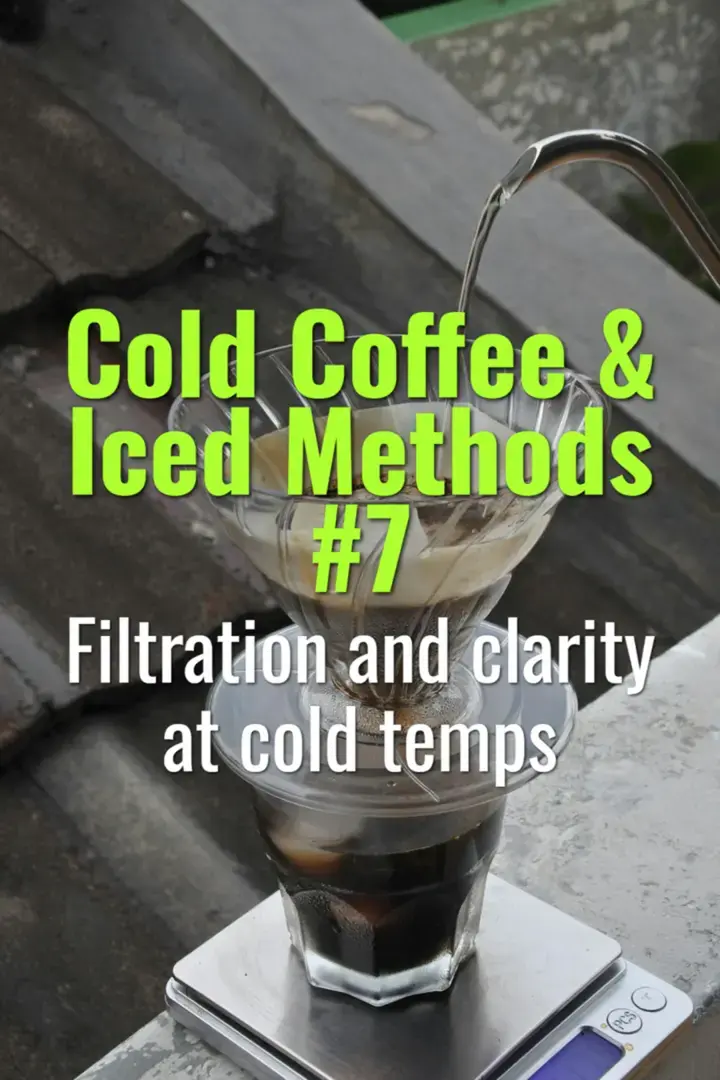Filtration and clarity at cold temps
Why filtration is especially important in cold coffee methods, how cold temperatures affect clarity, and which filtration techniques work best.
- Coffee Basics Nerds
- 2 min read
Article 7 of 12 in Cold Coffee & Iced Methods/

Why Filtration Matters
- Cold brew and iced coffee often develop cloudiness if fines remain suspended.
- Sediment negatively impacts mouthfeel, creating a gritty or muddy texture.
- Clearer brews improve aesthetics, shelf life, and flavor stability.
Challenges at Cold Temperatures
- Cold liquids are more viscous → fines settle slowly.
- Lipids and proteins in coffee can precipitate out when chilled, adding haze.
- Oils oxidize more slowly at low temps but contribute to cloudiness.
Filtration Methods
- Metal/mesh filters: Allow more oils and fines through → fuller body, but less clarity.
- Paper filters: Trap most fines and oils → brighter, cleaner flavor, better clarity.
- Cloth filters: Very fine retention, but risk of absorbing aromatics and adding staleness if not cleaned properly.
- Lab-style filtration (e.g., centrifuge, filter papers): Produces crystal-clear brews for competitions or bottled service.
Multi-Stage Approach
- Initial Separation: Coarse sieve or metal filter removes larger particles.
- Secondary Filtering: Paper or cloth filter for finer clarity.
- Optional Polishing: Cold-settling (leave brew refrigerated, decant clear top) or centrifugation for ultimate clarity.
Flavor Outcomes
- Less filtration: Heavier body, but risk of muddy flavors.
- More filtration: Cleaner, brighter profile, with extended shelf stability.
- Choice depends on café style (rustic vs specialty presentation).
Practical Tips
- Always filter cold coffee after brewing, not before.
- Chill coffee before final filtration—sediment settles better.
- Use high-quality filters to avoid papery off-flavors.
Summary
At cold temperatures, fines and oils cloud coffee and dull flavor. Layered filtration—metal for coarse, paper or cloth for fine—produces clear, stable brews with clean flavor, especially important for bottled or nitro cold coffee service.